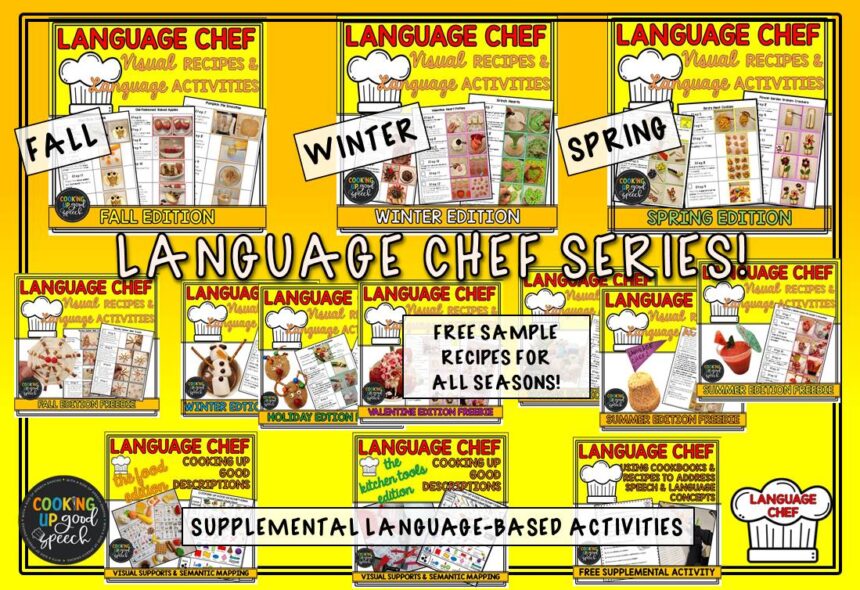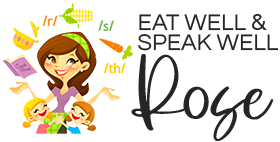
WORKING MEMORY is the cognitive system that temporarily holds and manipulates information during tasks. When we engage in the recipe-making process, we have many opportunities to strengthen our WORKING MEMORY!
Did you know that some of the tried and true STRATEGIES that we use, as SLPs, in our speech/language sessions to strengthen WM skills can ALSO be incorporated when making a RECIPE with your students? For example, take the following working memories strategies into account when making a recipe:
- Chunking: Breaking down information into smaller, manageable chunks. This strategy can help when reading through multiple steps in a recipe by grouping steps of the recipe together to help your students grasp and comprehend all the parts of the task.
- Rehearsal: Repeating the ingredients or the steps aloud or to oneself. This helps maintain the information in your working memory and reinforces the “neural connections” related to that information.
- Visualization: Creating mental images to represent the information you want to remember. This strategy is probably my favorite and MOST IMPORTANT of the WM strategies (in my humble opinion). Visualizing the recipe steps can make it easier to comprehend and recall at a later date (i.e.: when summarizing the recipe after you have made it, or having a conversation about it with family and friends.)
- Association: Connect new information to existing knowledge or memories. By linking new information to what you already know, you create a stronger mental network that aids memory retrieval. For example, if your student had previous experience making smoothies or mini pizzas, that knowledge will help them when you make a similar recipe and ask them to recall the steps, because of their past experiential knowledge.
So now that we discussed WM strategies, let’s look at several aspects of cooking that require us to use our WM. Think about which of the above-mentioned strategies you would use to help with these tasks:
#1—Following Recipes:
Cooking requires following step-by-step instructions and remembering each step in the process. This exercise helps improve sequential memory, an essential aspect of working memory.
#2—Memory for Ingredients:
Before starting a recipe, try to memorize the list of ingredients you’ll need. This exercise enhances short-term memory, which is an integral part of working memory.
#3—Mindful Cooking:
Engage your senses during cooking, paying close attention to colors, smells, textures, and flavors. This mindful awareness helps strengthen your sensory memory and overall working memory capacity.
#4—Categorizing Ingredients:
Group ingredients based on their types or functions while cooking. For example, separate spices, vegetables, fruits, sweet foods, red foods, white foods, etc…This categorization exercise can enhance working memory organization and retrieval.
#5– Timing and Planning:
Planning and organizing cooking steps, such as melting or heating an ingredient in the microwave while preparing other ingredients challenges your working memory’s ability to retain and manipulate information.
#6- Cooking Games and Challenges:
Engage in cooking-related memory games or challenges, such as naming all the ingredients used in a dish after tasting it or remembering the order in which specific ingredients were added.
#7– Teaching Others:
When you teach someone else how to make a recipe, you reinforce your own memory of the recipe and the cooking process!
If you are an educator thinking about making a recipe in your next classroom lesson or therapy session, or a parent who wants to make cooking into a “teachable moment” in your home kitchen, remember that cooking not only teaches kids life skills but can also be used to strengthen WORKING MEMORY skills!
Interested in using a COOKING THEME to address communication skills in your classroom or therapy setting? LANGUAGE CHEF can help! LANGUAGE CHEF–The Ultimate Language-Based Recipe Resource allows you to address WORKING MEMORY strategies by breaking down recipes into steps, providing checklists, graphic organizers, and step-by-step photo visuals. So many opportunities to practice LANGUAGE, COMMUNICATION, and WORKING MEMORY!!
I can’t wait to start “Cooking Up Good Speech and Language” with you and your students!












Leave a Reply